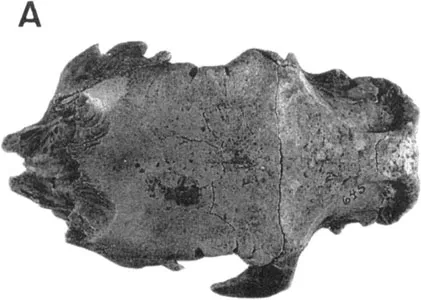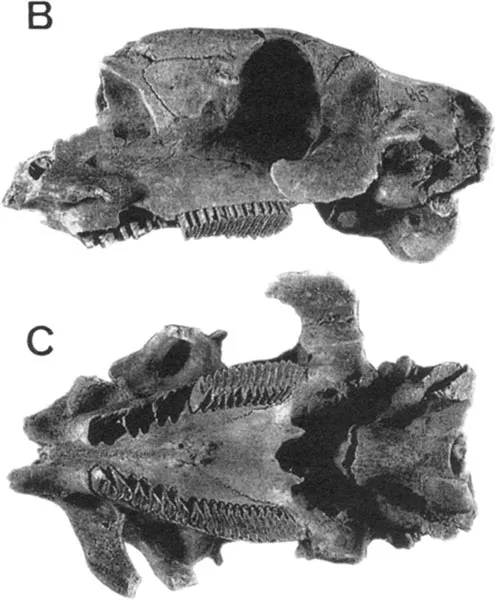
eBook - ePub
Quaternary of South America and Antarctica Peninsula 1998
Jorge Rabassa, Monica Salemme, Jorge Rabassa, Monica Salemme
This is a test
Partager le livre
- 328 pages
- English
- ePUB (adapté aux mobiles)
- Disponible sur iOS et Android
eBook - ePub
Quaternary of South America and Antarctica Peninsula 1998
Jorge Rabassa, Monica Salemme, Jorge Rabassa, Monica Salemme
Détails du livre
Aperçu du livre
Table des matières
Citations
À propos de ce livre
This text deals with certain geological aspects of the extreme geographical locations of South America and the Antarctic Peninsula. Topics include: Brazil - geology and vertebrate paleontology; pleistocene wave-built terraces of Northern Rio de Janeiro state; and holocene coastal evolution.
Foire aux questions
Comment puis-je résilier mon abonnement ?
Il vous suffit de vous rendre dans la section compte dans paramètres et de cliquer sur « Résilier l’abonnement ». C’est aussi simple que cela ! Une fois que vous aurez résilié votre abonnement, il restera actif pour le reste de la période pour laquelle vous avez payé. Découvrez-en plus ici.
Puis-je / comment puis-je télécharger des livres ?
Pour le moment, tous nos livres en format ePub adaptés aux mobiles peuvent être téléchargés via l’application. La plupart de nos PDF sont également disponibles en téléchargement et les autres seront téléchargeables très prochainement. Découvrez-en plus ici.
Quelle est la différence entre les formules tarifaires ?
Les deux abonnements vous donnent un accès complet à la bibliothèque et à toutes les fonctionnalités de Perlego. Les seules différences sont les tarifs ainsi que la période d’abonnement : avec l’abonnement annuel, vous économiserez environ 30 % par rapport à 12 mois d’abonnement mensuel.
Qu’est-ce que Perlego ?
Nous sommes un service d’abonnement à des ouvrages universitaires en ligne, où vous pouvez accéder à toute une bibliothèque pour un prix inférieur à celui d’un seul livre par mois. Avec plus d’un million de livres sur plus de 1 000 sujets, nous avons ce qu’il vous faut ! Découvrez-en plus ici.
Prenez-vous en charge la synthèse vocale ?
Recherchez le symbole Écouter sur votre prochain livre pour voir si vous pouvez l’écouter. L’outil Écouter lit le texte à haute voix pour vous, en surlignant le passage qui est en cours de lecture. Vous pouvez le mettre sur pause, l’accélérer ou le ralentir. Découvrez-en plus ici.
Est-ce que Quaternary of South America and Antarctica Peninsula 1998 est un PDF/ePUB en ligne ?
Oui, vous pouvez accéder à Quaternary of South America and Antarctica Peninsula 1998 par Jorge Rabassa, Monica Salemme, Jorge Rabassa, Monica Salemme en format PDF et/ou ePUB ainsi qu’à d’autres livres populaires dans Biological Sciences et Evolution. Nous disposons de plus d’un million d’ouvrages à découvrir dans notre catalogue.
Informations
1
The presence of Neochoerus Hay, 1926 (Rodentia, Hydrochoeridae) in Pleistocenic sediments of Southwestern Buenos Aires Province, Argentina
Comisión de Investigaciones Científicas (CIC) & Departamento Paleontología Vertebrados, Museo de La Plata, La Plata, Argentina.
ABSTRACT: An almost complete skull of Neochoerus sp. (Rodentia, Hydrochoeridae) from Bajo San José (lat. 38°34′S, southwestern Buenos Aires province, Argentina) is described. The bearing unit is considered of Ensenadan Land-Mammal Age (Early-Middle Pleistocene). This is the record of highest latitude of the genus, and of the Family Hydrochoeridae since the end of the Pliocene. Bajo San José is placed in the border between two zoogeographic subregions. The presence of Neochoerus at this latitude can be taken as an example of the historical dynamism of the Pampasic fauna during the Quaternary, which was signed by the strong climatic changes characteristic of the Pleistocene. The accompanying fauna is conformed by genera or species inhabiting today under either more humid and temperate conditions or more arid ones than those of the area of Bajo San José. The former may suggest more arid conditions than today for this area, and the latter, may either be relict forms of more humid and warmer prior conditions, or indicate environmental changes towards higher temperature and humidity which favoured their southern dispersion along rivers and streams.
RESUMEN: Se describe un cráneo casi completo de Neochoerus sp. (Rodentia, Hydrochoeridae), hallado en Bajo San José (lat. 38°34′S, sudoeste de la provincia de Buenos Aires, Argentina). La unidad portadora es considerada de Edad Ensenadense (Pleistoceno temprano-medio). Este es el registro más austral del género y de la Familia Hydrochoeridae desde el fin del Plioceno. Bajo San José está ubicado en el límite entre dos subregiones zoogeográficas. La presencia de Neochoerus en esta latitud puede tomarse como un ejemplo del dinamismo histórico de la fauna pampásica durante el Cuaternario, caracterizado por los grandes cambios climáticos del Pleistoceno. La fauna acompañante está compuesta por géneros o especies que habitan en la actualidad zonas más áridas o más húmedas y templadas que las del área de Bajo San José. Las primeras pueden sugerir condiciones más áridas que las actuales de esta zona, y las últimas, pueden ser tanto formas relictuales de condiciones más húmedas y cálidas previas, como indicar cambios ambientales hacia condiciones de mayor temperatura y humedad que habrían favorecido su dispersión hacia el sur a lo largo de ríos o arroyos.
1 INTRODUCTION
New remains of Neochoerus are described in this paper, coming from Bajo San José (Coronel Pringles county, Southwestern Buenos Aires province, Argentina). A preliminary list of the fossil fauna found in this locality was published by Deschamps & Borromei (1992); fish remains were studied by Cione & Lopez Arbarello (1993), and the sigmodontine rodents by Pardinas & Deschamps (1996). The fossil-bearing unit outcrops at both margins of the Sauce Grande river, being the best site a gravel quarry located near the bridge of the National Route 51 over this river (lat. 38°34′ S, long. 61°41′ W), 51 km northeast of the city of Bahia Blanca (Fig. 1). The geological setting has been discussed in Borromei (1989) and Deschamps & Borromei (1992), in whose papers the entire sequence was attributed to a Pleistocene deposit originated by a gravelly braided stream system. Deschamps (1995) assigned this deposit to the Ensenadan (Early-Middle Pleistocene) Land-Mammal Age (Pascual et al. 1965, Cione & Tonni 1995).

Figure 1. Location map.
2 MATERIAL AND METHODS
The fossil material herein described has been compared with skulls of Hydrochoerus hydrochaeris (‘carpincho’): MLP 650, MLP 1406, MLP 14-IX-55-1 and MLP 18-VIII-92–16 from the Departamento de Zoología Vertebrados, 43 and 427 from the Departamento de Paleontología Vertebrados, Museo de La Plata, La Plata, Argentina, and with the following fossil specimens from Museo Argentino de Ciencias Naturales ‘Bernardino Rivadavia’ (MACN), Buenos Aires, of related genera: MACN: 16688, 5302, 5313, 587 and 588.
The ontogenetic stage of this specimen was estimated following Mones (1991: 96, Fig. 12) who proposed five classes of ages (Ages 0–4) taking into account the ossifying sequence of the basicranium.
3 SYSTEMATICS
Family HYDROCHOERIDAE Gray, 1825
Subfamily HYDROCHOERINAE Gray, 1825
Genus Neochoerus Hay, 1926 Neochoerus sp. (Fig. 2 A, B, C)
Material: UNSGH (Universidad Nacional del Sur, Geología Histórica) 645: part of the skull with right P4-M3 and left M3.
Description: It is a very well preserved skull, though without the rostrum and part of the zygomatic arches. It is a young specimen of age 2 since its exoccipital-basioccipital and basisphenoid-presphenoid (Ages 1 and 2) sutures are ossified, but not its exoccipital-supraoccipital and basioccipital-basisphenoid ones (Ages 3 and 4 respectively). Its size is approximately 20% larger than that of the single living species and genus Hydrochoerus hydrochaeris (see Table 1). Consequently, it can be accepted that when adult, it could have reached the size of the species of the genus Neochoerus, that is, a third to half larger than the living species.

Figure 2. Skull of Neochoerus sp. UNSGH 645. a) Upper view.

Figure 2. b) Lateral view, c) Lower view. Scale: 5 cm.
Neochoerus sp. UNSGH 645 | H. crespoi MACN-16688 | H. dasseni MACN-5302 | N. tarijensis MACN 587–588 | H. hydrochaeris (six skulls) | ...
|---|